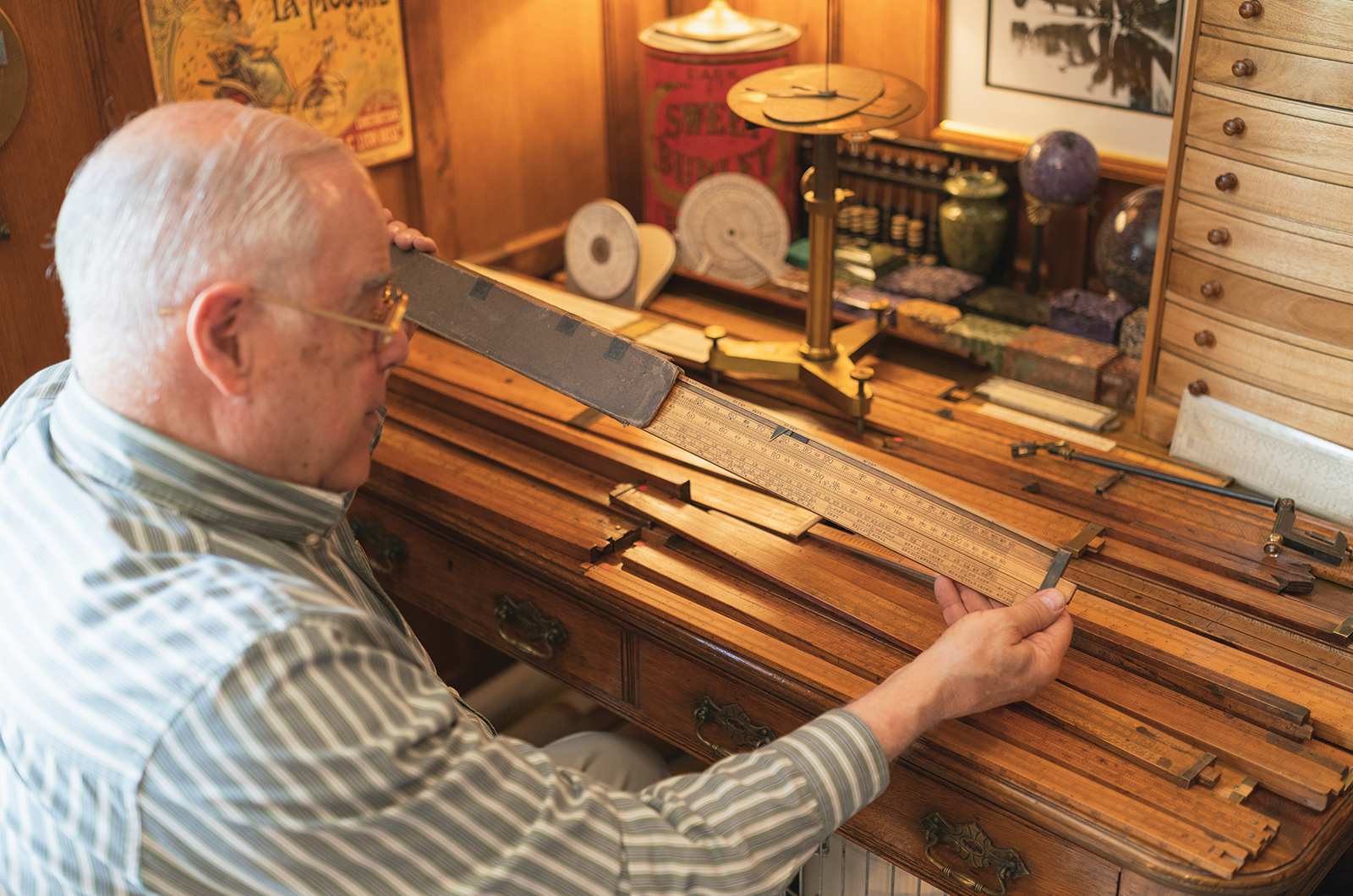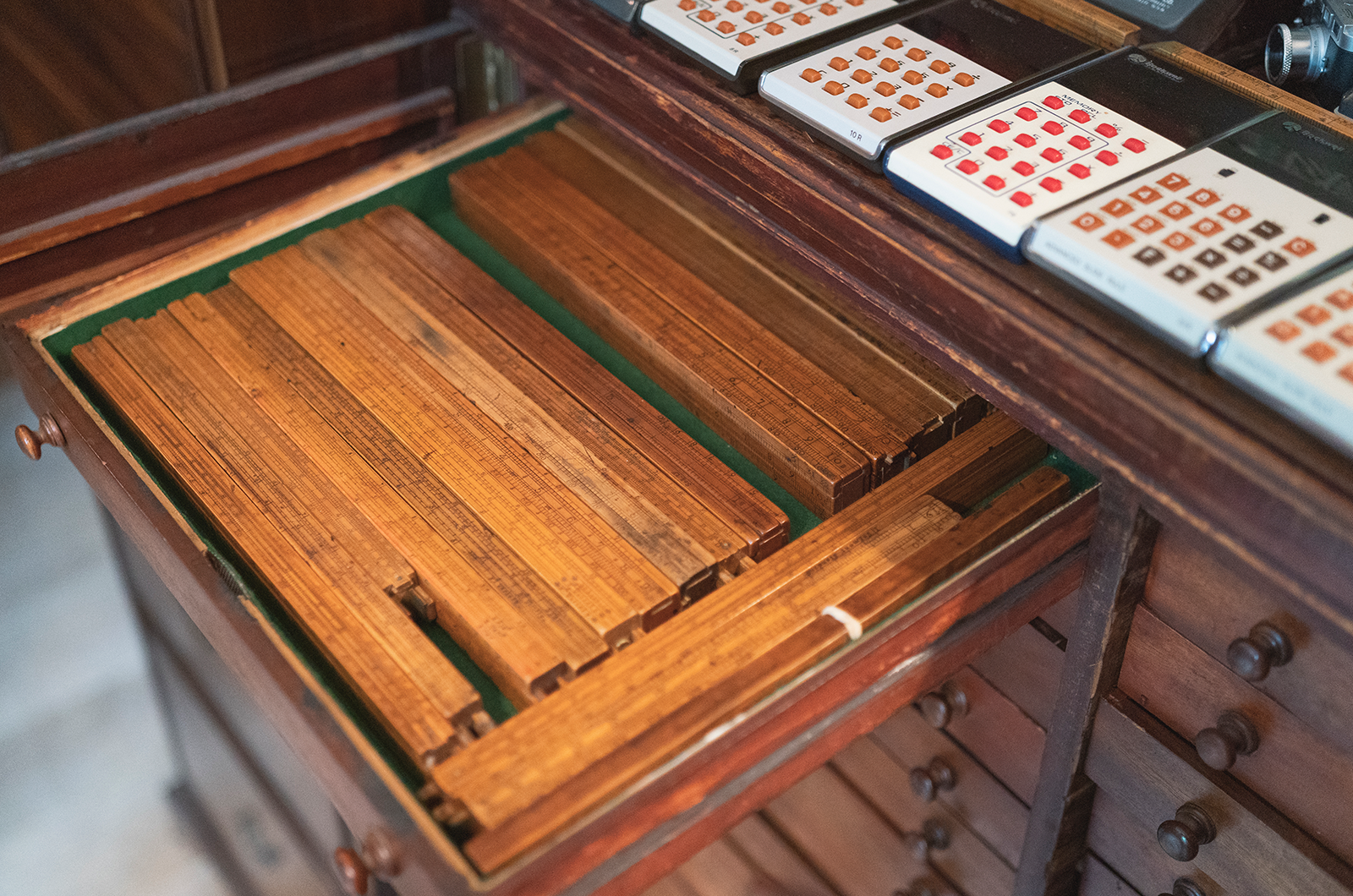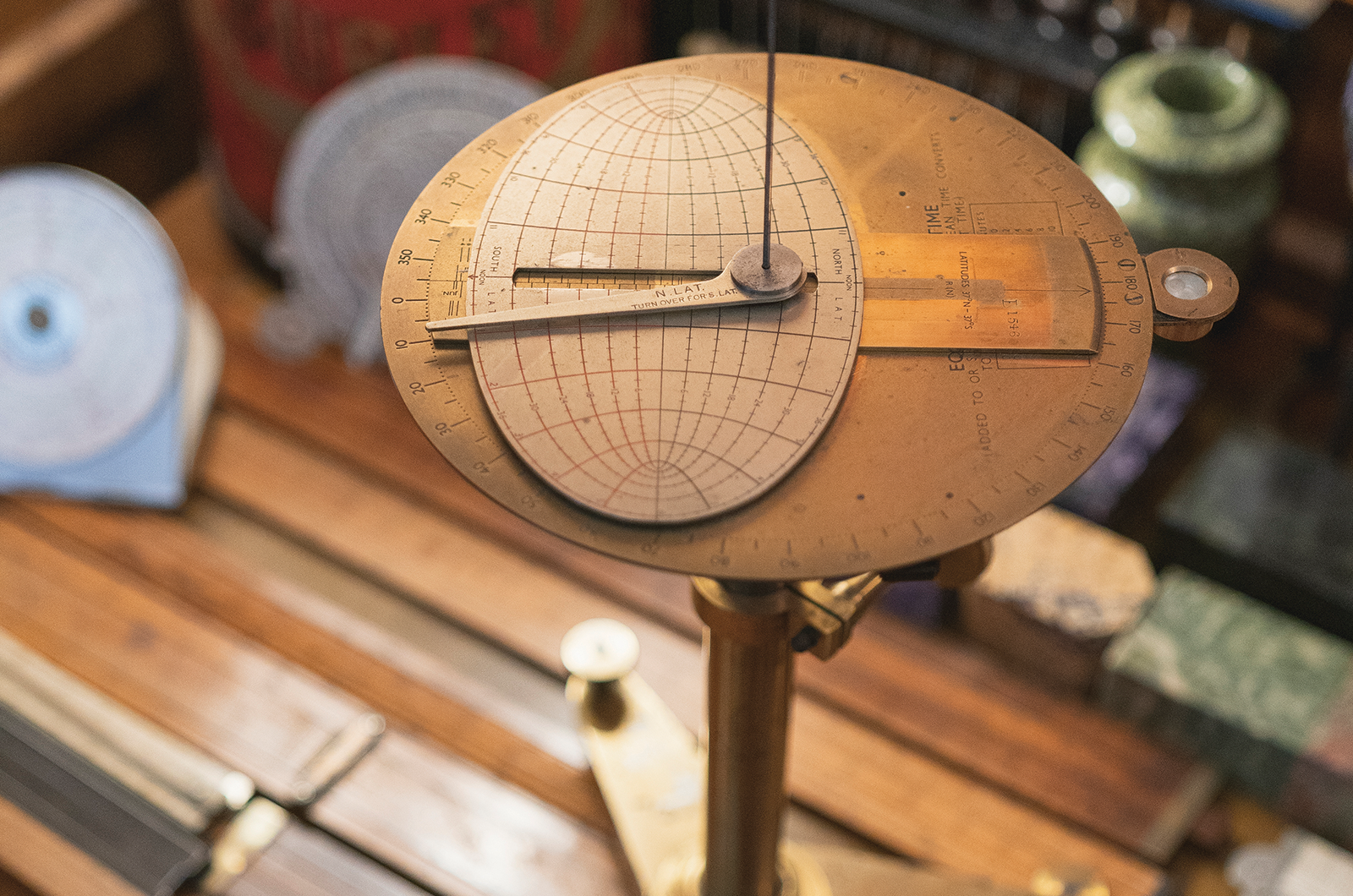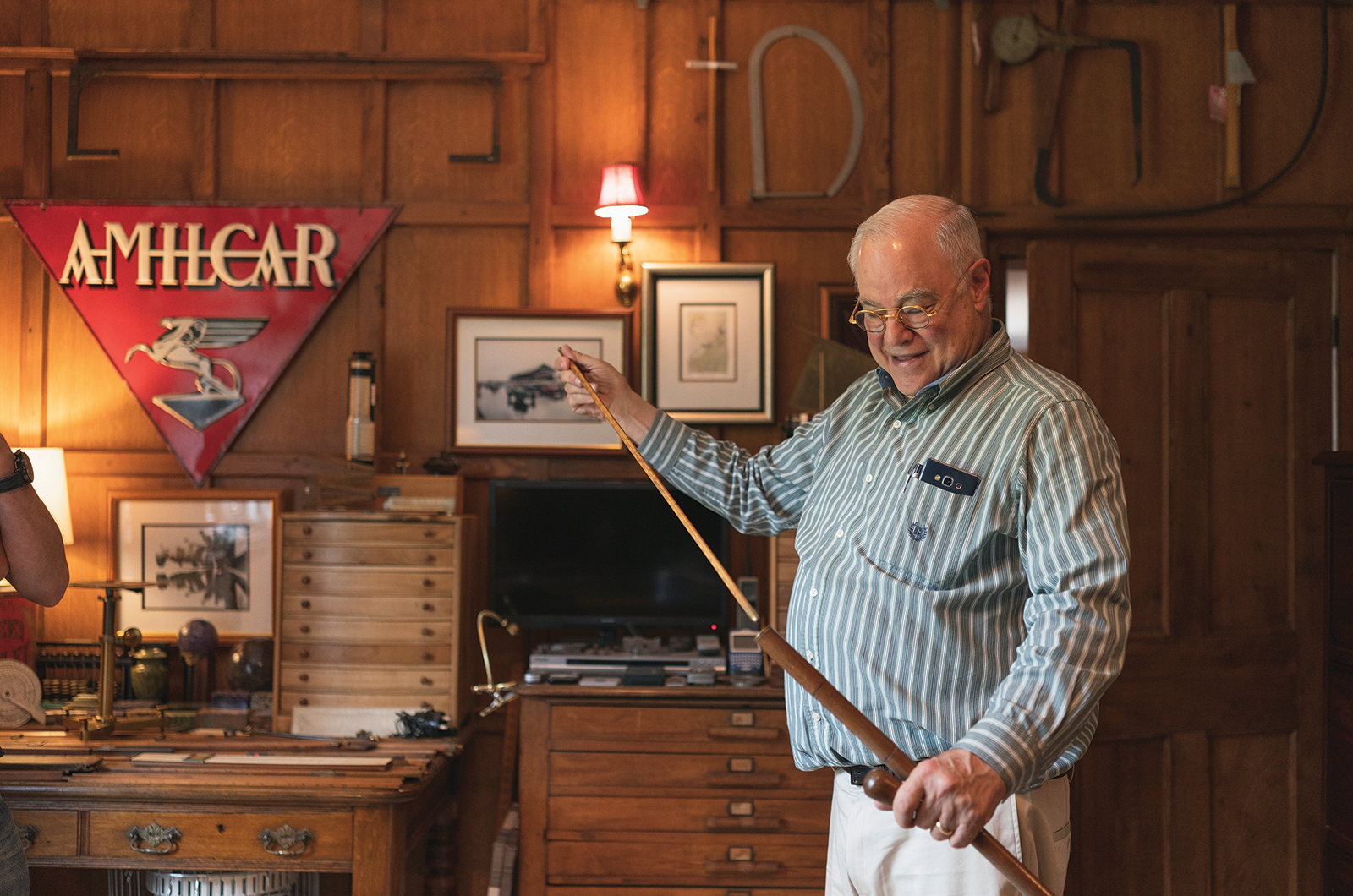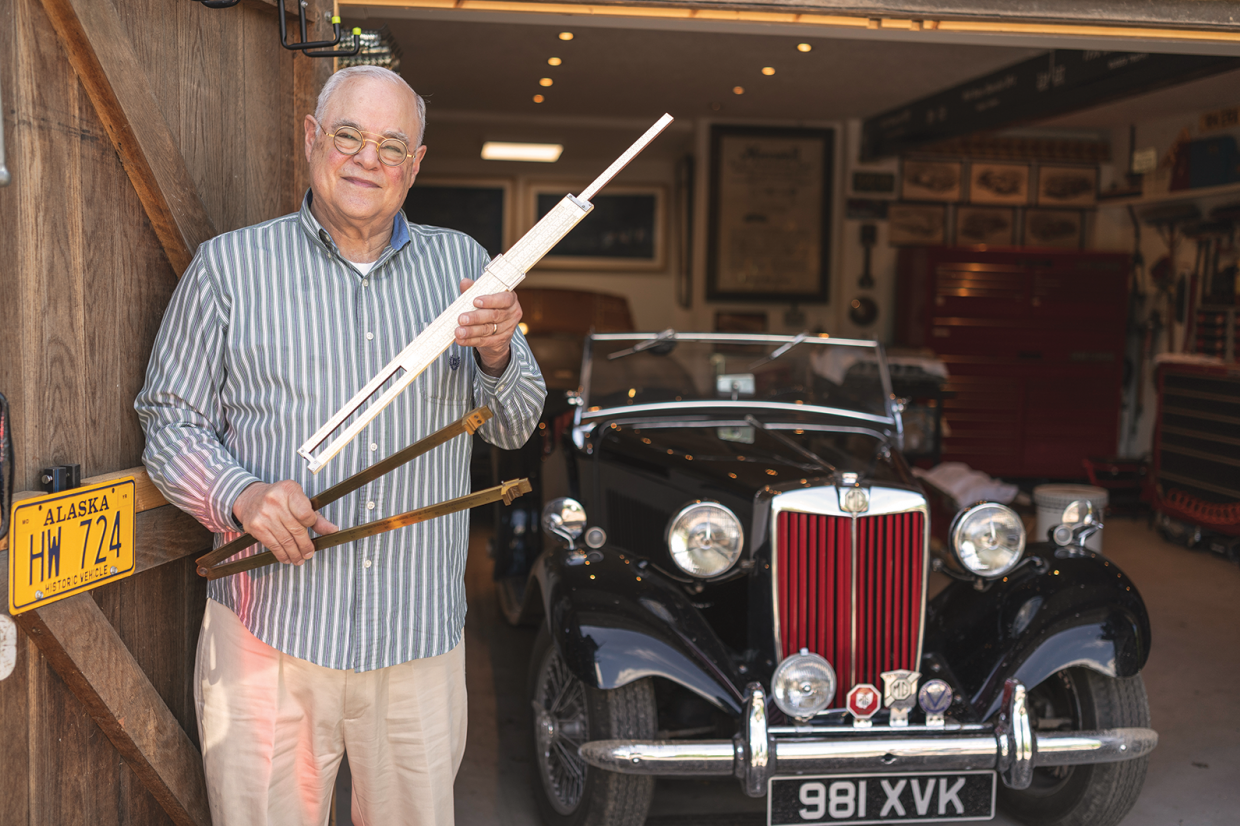
Edward Dean Butler has owned some amazing cars.
An ex-Louis Chiron Bugatti Type 51, ERA R1A, an ex-factory Maserati 8CTF, one of three Allard J2s that raced at Le Mans in 1953 and the MG TD he has owned since he was 16.
Next to the garages that house his cars is an automotive library and collection of magazines that is one of the largest in the world.
In it is a complete set of Classic & Sports Car, Autocar, Motor, Car & Driver, Hot Rod and hundreds more.
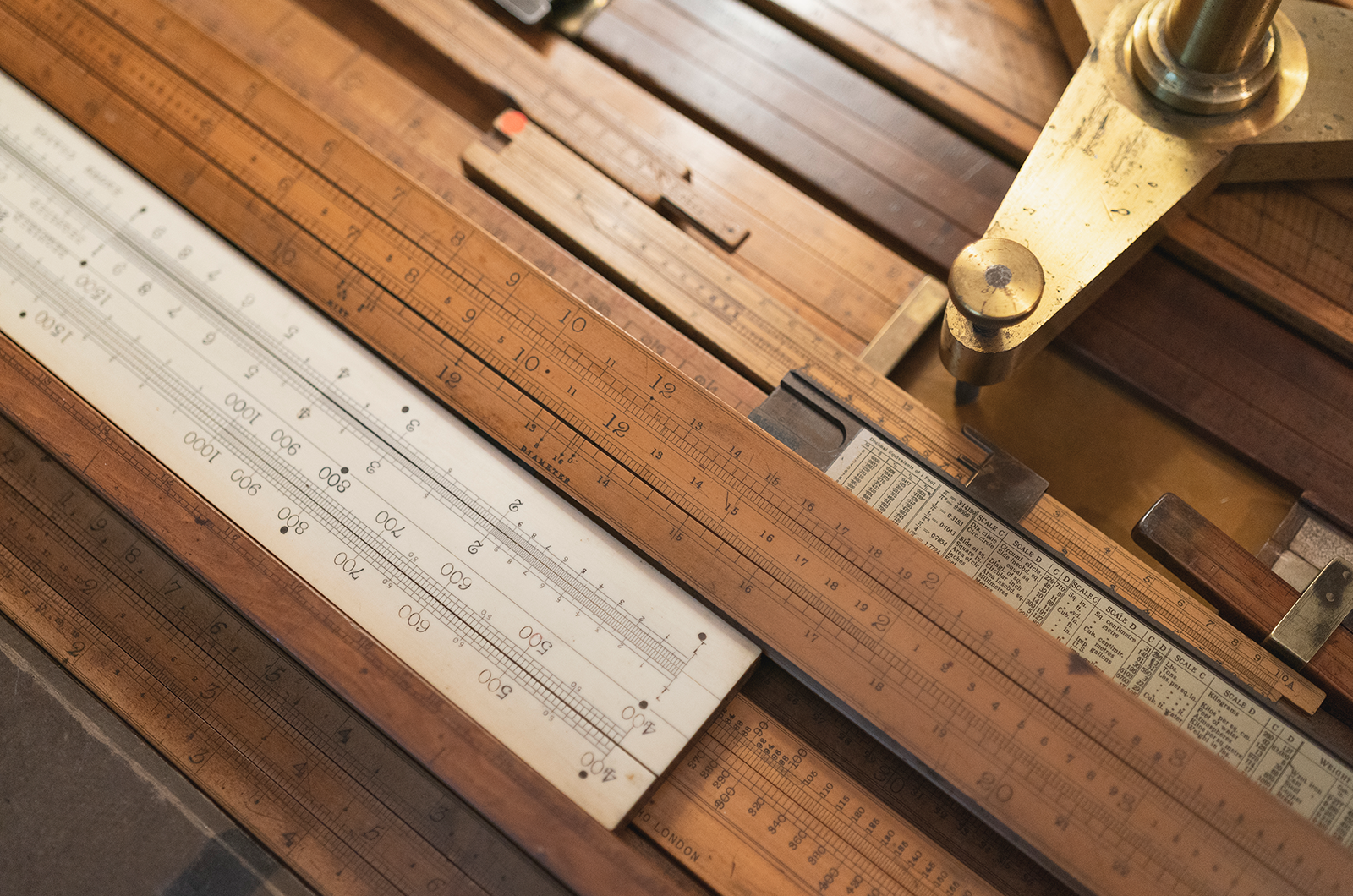
Slide rules take up far less space than classic cars, part of the reason Edward Dean Butler’s collection now exceeds 2000
Butler has got the collecting bug bad.
Apart from the cars and his world-class motoring library, Butler has a collection of more than 2000 slide rules.
Surely this must be the largest in the world? “I’m not sure,” he replies. “The head of chip research at Intel has a huge collection.”
“The slide rule was invented in Britain in the 1700s for use by tax collectors,” explains Butler.
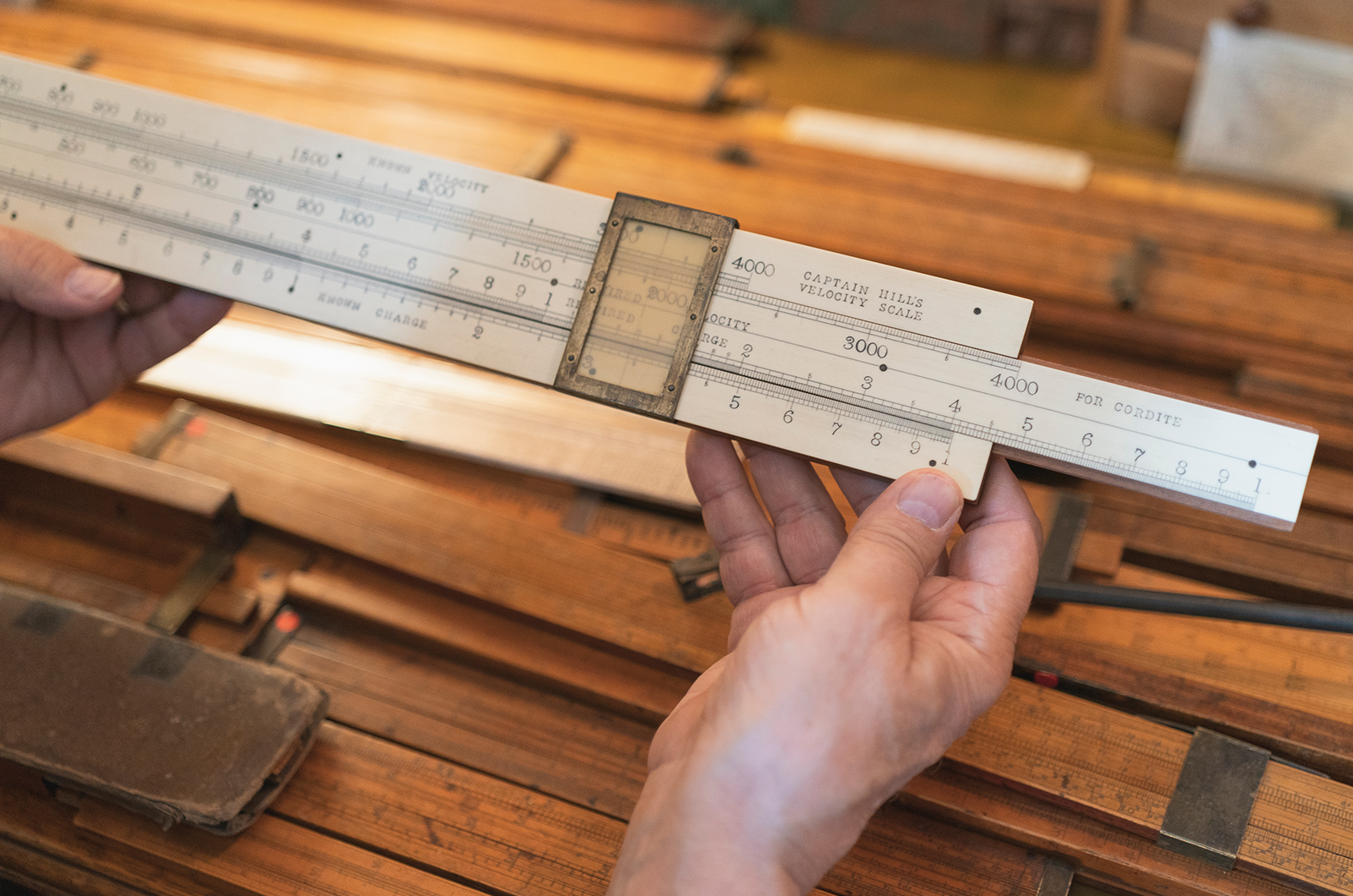
Slide rules became useful instruments to calculate a wide variety of measurements

